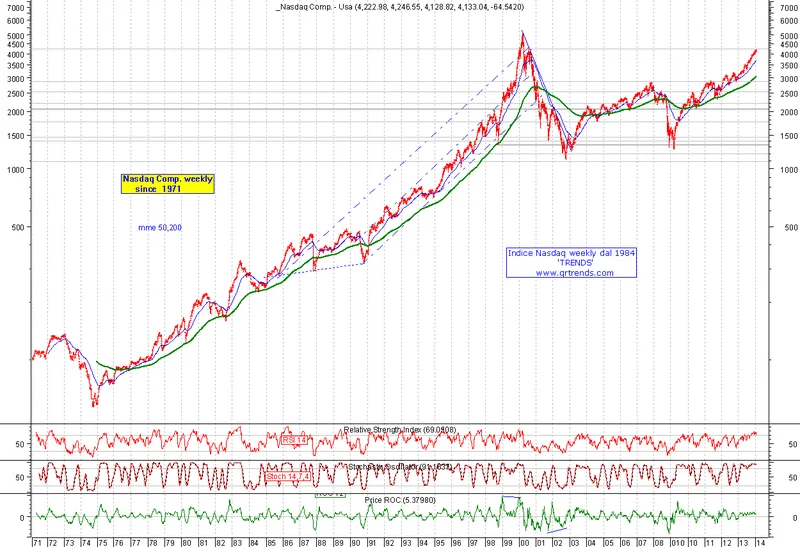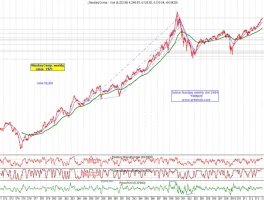It was just another day on the market until it wasn't. For a while, the screens had been a sea of anxious red and stagnant gray, the digital pulse of our economy mirroring the gridlock in Washington. Then, the news broke. A deal. A breakthrough. And suddenly, the ticker tape exploded in a cascade of brilliant green.
I watched it happen in real-time. The Nasdaq Composite, that bellwether of our technological future, didn't just edge up; it launched. A 2.3% surge, its biggest single-day leap since May. The Nasdaq Had Its Best Day Since May With End of Government Shutdown in Sight. The Dow and S&P 500 followed suit, but my eyes were fixed on the Nasdaq. Because this wasn't just about stocks, was it? This was a collective, digital sigh of relief. It was the market, in its own language of numbers and cents, screaming a fundamental truth about the nature of progress itself. When I saw those numbers flash across my screen, I didn't just see a percentage gain; I saw a collective exhale. It was the kind of data point that reminds me why I believe so deeply in the intersection of technology and society.
What does a political agreement in D.C. have to do with the price of a semiconductor stock or the valuation of a software startup? Everything. It tells us a story not about politics, but about the very ecosystem required for innovation to breathe.
The Fragile Architecture of Tomorrow
Think of the tech sector as a high-performance engine, the kind we build at places like MIT. It’s a marvel of precision engineering, designed to run faster and more efficiently than anything that has come before it. It’s built from brilliant ideas, late-night coding sessions, and the audacious belief that we can solve the world’s biggest problems. But that engine, for all its power, requires one thing above all else: clean fuel.
Political stability, predictability, and a functioning government—that’s the clean, high-octane fuel for the engine of innovation. A government shutdown, on the other hand, is like pouring sludge into the gas tank. It’s uncertainty. It’s chaos. The engine doesn't necessarily break, but it sputters. It hesitates. Long-term projects get shelved. Ambitious R&D budgets are questioned. Investors, the people who provide the capital for these moonshots, get nervous and pull back.
The Nasdaq is uniquely sensitive to this because it's a "tech-heavy" index—in simpler terms, it’s not just a measure of the economy today, it’s a living document of our collective bet on tomorrow. It represents the companies building artificial intelligence, sequencing genomes, and designing the next generation of renewable energy. These are the ventures that require immense capital and unwavering belief, and that kind of long-term thinking is just impossible when the very foundation of the system feels like it's cracking under the weight of political squabbling. So when that sludge was finally cleared from the fuel line, what did the engine do? It roared back to life.

A Barometer of Hope, Not Greed
It’s easy to be cynical here. It’s easy to dismiss this as just Wall Street being Wall Street, a bunch of traders getting excited about a headline. But I urge you to look deeper. This isn't just a story about short-term gains; it's a profound statement about the prerequisites for building a better future.
This is our modern-day version of the Age of Discovery. The great voyages of exploration in the 15th and 16th centuries weren't launched from kingdoms in the midst of civil war. They were funded by stable, confident governments and investors who had the security to bet on a long, uncertain journey with the potential for a world-changing payoff. You simply can't fund a trip to a New World if you’re worried your own world is falling apart back home.
Our New World is artificial general intelligence, personalized medicine, and sustainable planetary living. The surge we saw wasn't just greed. It was hope returning to the system. It was the system reaffirming its willingness to fund those long, difficult voyages once again. And it leaves me with some crucial questions. How many brilliant ideas were shelved during that period of uncertainty? How many founders hesitated to launch, waiting for the political storms to pass? What future did we momentarily postpone?
This is the ethical dimension we can’t ignore. The power to create these incredible technologies comes with a profound responsibility to maintain the stable civic ground on which they are built. The innovators are doing their part. The question is whether our systems of governance can keep up.
The Future Doesn't Run on Chaos
That 2.3% jump wasn't just a number. It was a signal. A flare sent up by the dreamers, the builders, and the investors who fund them. The message was unambiguous: The audacious, expensive, and deeply human project of building the future is a fragile one. It cannot thrive amidst chaos. It requires a bedrock of cooperation, predictability, and functional governance.
The market’s reaction showed us a glimpse of the explosive potential that’s waiting to be unleashed when we simply clear the path. Now, imagine what we can build when we decide to keep it clear for good.

